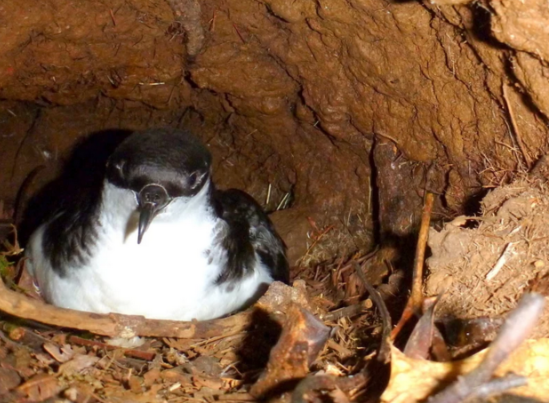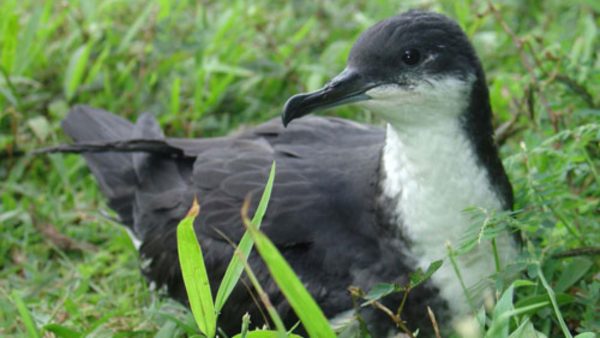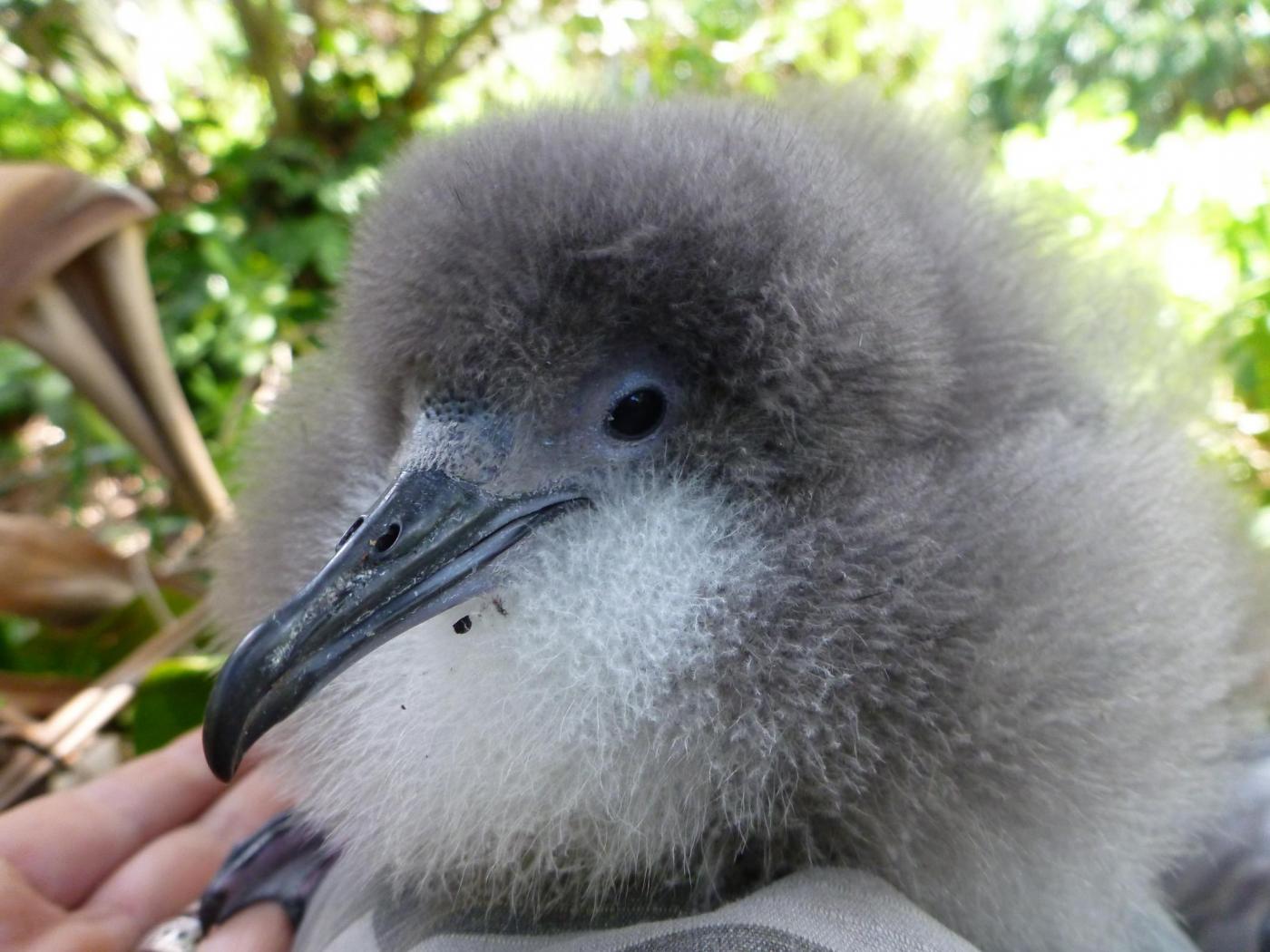Tonight is a big night for one of Kauai’s young Newell’s shearwater seabirds.
Once just a tiny gray puff of a chick, this fledgling has spent the first few months of his life in and around his family’s burrow high on a cliff on the north side of Kauai island. He has been exercising his wings, preparing to take on life beyond his nest, and is now ready to leave his two parents for good. As a nocturnal seabird, he has been waiting for just the right evening to take flight from this home perch all the way down to the ocean below where he will learn to dive for fish. Like the centuries of his ancestors before him, his instinct is to follow the light of the moon out to the sea.
But soon after he launches himself from the mountain, something goes terribly wrong.
The bright lights atop a building that appear in his flight path confuse him, and he loses his connection with the moon. He manages a course correction but soon more lights create another imposter for moonlight. In a neighborhood close to the water, a high school football game is underway under stadium lighting. The bird circles the light posts, disoriented, and then circles again and again until, finally, exhausted, he falls to the ground near the bleachers.
About Newell’s Shearwater Seabirds
Endemic to Kauai, the Newell’s shearwater, (or a’o in Hawaiian), is a gull-sized seabird beloved for its formal-wear look of glossy black top feathers, white bottom feathers, pink legs and hooked black bill.
Shearwaters mate for life. The female lays a single white egg and then takes turns with the male incubating it for 62 days. Once hatched, the chick stays in the burrowed nest with its parents for up to 100 days. These birds use the same burrows year after year and often the same parents will return to their previous nest to lay a new egg.
Fledglings who are ready to leave the nest require a clear downhill flight path to become airborne so they can make it out to sea. Shearwaters are pelagic birds which means they spend most of their lives on the ocean and head back to land only when it is time to breed. They have thin, long wings that make them exceptionally strong and able to maintain flight for weeks at a time, staying thousands of miles off shore and even sleeping mid-flight. Expert divers, they can plunge as deep as 150 feet into the sea to catch their meals of small squid and fish. It’s a rare treat to watch them as they actually swim underwater using their wings to propel them.

Endangered Birds in Kauai
The Hawaiian islands were once thronged with Newell’s shearwater seabirds. Today, however, they are found almost exclusively on Kauai island and are federally protected. These magnificent birds were thought to be extinct in 1908 but were then rediscovered in 1947 and nests seemed to thrive around Kauai in the decades to follow. Since then, however, its population has dwindled by an alarming 75 percent.
The Newell’s shearwaters seem to encounter danger at every turn: Hurricanes ravage the forests where they burrow and breed, while pigs and goats consume what’s left of their habitats. And even if they can find secure nesting spots, they have to worry about being eaten by non-native cats, rats, or mongoose.
In addition to the artificial lights of the hotels, schools and street lamps, according to the American Bird Conservancy, collisions with power lines kill many shearwaters traveling to and from their nest burrows. Even if the seabirds survive a fall, they can get hit by cars, killed by cats and dogs, or simply die from lack of food and water.

Happy Ending
Fortunately for our friend who was on a collision course with the football field, a good Samaritan came to his rescue. As she had observed from previous bird encounters in her community, she took off her sweatshirt and used it to gently wrap up the trembling shearwater. She called the Humane Society who directed her to take the injured bird to the Save Our Shearwaters hospital.
At the facility, one of the wildlife rehabilitation technicians unwrapped the yellow garment and the shearwater peeked up at her with his inky black eyes. She checked him over and then admitted him for further examination. He wasn’t too badly injured and after several days of care was eventually released, as good as new, into the wild.
Should you encounter a bird on the ground, the Save Our Shearwaters organization says this is the best way to help: “Gently pick it up from behind with a towel, carefully wrapping the bird completely around its back, wings, and head. Watch the beak! It can be sharp and powerful. Place it in a ventilated container in a quiet, shaded or cool location until you can bring it to a permitted rehabilitation center.”
Please visit https://saveourshearwaters.org/rescue101 for more information. And if you’d love to see some of Kauai’s native birds for yourself, Koloa Landing Resort concierge is happy to hook you up with the best bird-watching tours on the island.
— Erica Karlin, Koloa Landing
